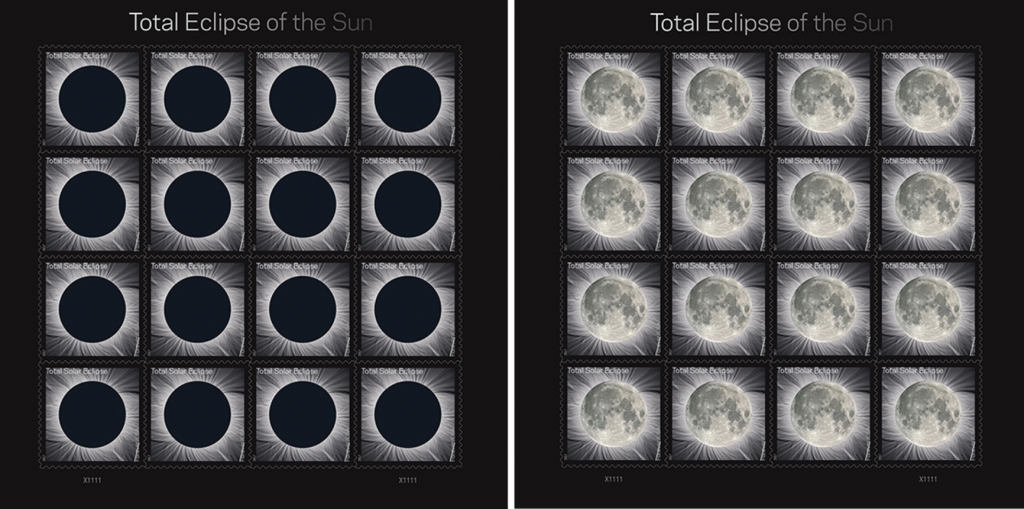
The US Postal Service is celebrating the August 21, 2017 Solar Eclipse with a special stamp that changes appearance when different temperatures interact with it. The Total Eclipse of the Sun stamp is the first US stamp to use thermochromic ink, which reacts to the heat of your touch.
Placing your finger over the black disc on the stamp causes the ink to change from black to clear to reveal an underlying image of the moon. The image reverts back to the black disc once it cools. The back of the stamp pane shows a map of the eclipse path. The stamp uses a photograph taken by astrophysicist Fred Espenak of a total solar eclipse that was seen over Jalu, Libya, on March 29, 2006. Mr. Espenak also took the photograph of the full moon that is revealed by pressing upon the stamp image. The reverse side of the stamp pane shows the path across the United States of the forthcoming August 21, 2017, total solar eclipse and gives the times that it will appear in some locations.
A total eclipse of the Sun occurs when the Moon completely blocks the visible solar disk from view, casting a shadow on Earth. The 70-mile-wide shadow path of the eclipse, known as the “path of totality,” will traverse the country diagonally, appearing first in Oregon (mid-morning local time) and exiting some 90 minutes later off the coast of South Carolina (mid-afternoon local time).
A total solar eclipse provides us with the only chance to see the Sun’s corona—its extended outer atmosphere—without specialized instruments. The corona during an eclipse looks like a gossamer white halo around a black disk, or like the petals of a flower reaching out into space.
Art director Antonio Alcalá designed the stamp.